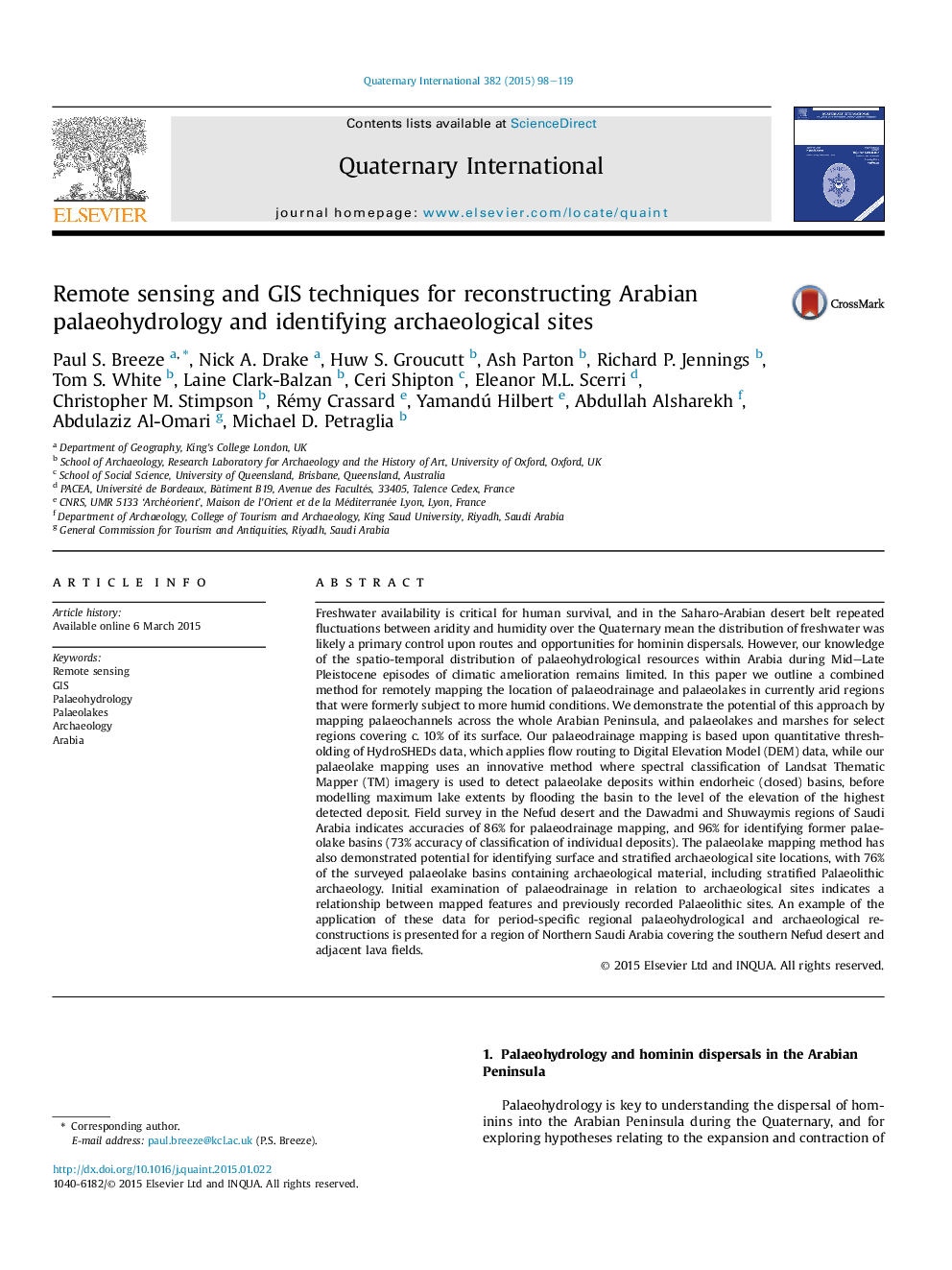| کد مقاله | کد نشریه | سال انتشار | مقاله انگلیسی | نسخه تمام متن |
|---|---|---|---|---|
| 1040626 | 1484116 | 2015 | 22 صفحه PDF | دانلود رایگان |

Freshwater availability is critical for human survival, and in the Saharo-Arabian desert belt repeated fluctuations between aridity and humidity over the Quaternary mean the distribution of freshwater was likely a primary control upon routes and opportunities for hominin dispersals. However, our knowledge of the spatio-temporal distribution of palaeohydrological resources within Arabia during Mid–Late Pleistocene episodes of climatic amelioration remains limited. In this paper we outline a combined method for remotely mapping the location of palaeodrainage and palaeolakes in currently arid regions that were formerly subject to more humid conditions. We demonstrate the potential of this approach by mapping palaeochannels across the whole Arabian Peninsula, and palaeolakes and marshes for select regions covering c. 10% of its surface. Our palaeodrainage mapping is based upon quantitative thresholding of HydroSHEDs data, which applies flow routing to Digital Elevation Model (DEM) data, while our palaeolake mapping uses an innovative method where spectral classification of Landsat Thematic Mapper (TM) imagery is used to detect palaeolake deposits within endorheic (closed) basins, before modelling maximum lake extents by flooding the basin to the level of the elevation of the highest detected deposit. Field survey in the Nefud desert and the Dawadmi and Shuwaymis regions of Saudi Arabia indicates accuracies of 86% for palaeodrainage mapping, and 96% for identifying former palaeolake basins (73% accuracy of classification of individual deposits). The palaeolake mapping method has also demonstrated potential for identifying surface and stratified archaeological site locations, with 76% of the surveyed palaeolake basins containing archaeological material, including stratified Palaeolithic archaeology. Initial examination of palaeodrainage in relation to archaeological sites indicates a relationship between mapped features and previously recorded Palaeolithic sites. An example of the application of these data for period-specific regional palaeohydrological and archaeological reconstructions is presented for a region of Northern Saudi Arabia covering the southern Nefud desert and adjacent lava fields.
Journal: Quaternary International - Volume 382, 24 September 2015, Pages 98–119